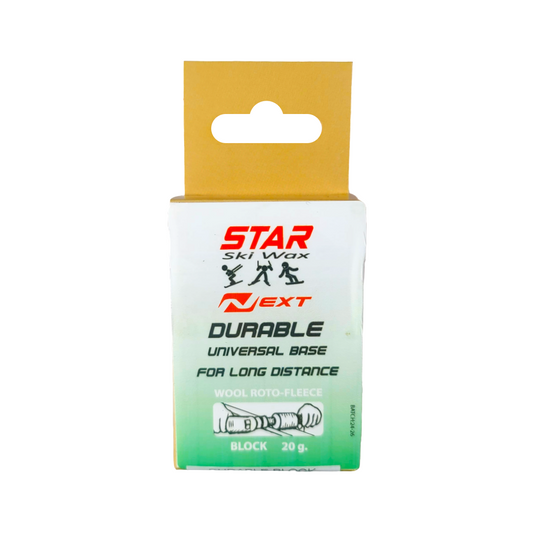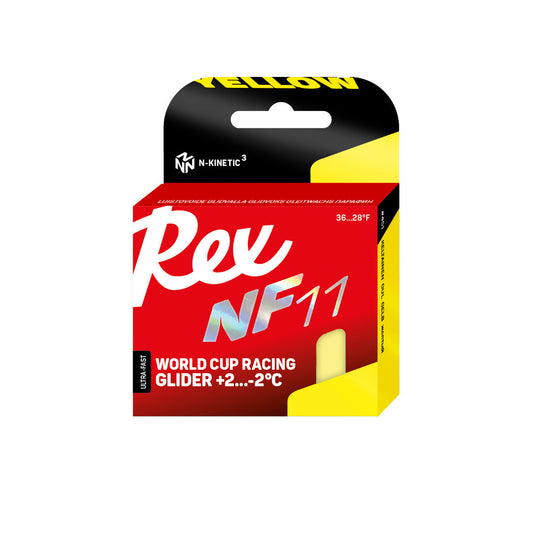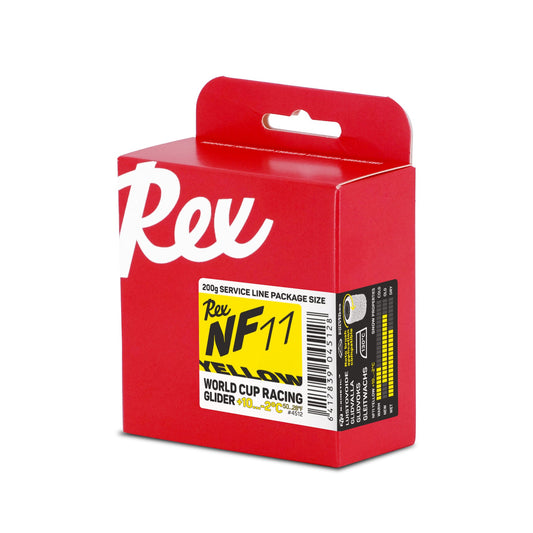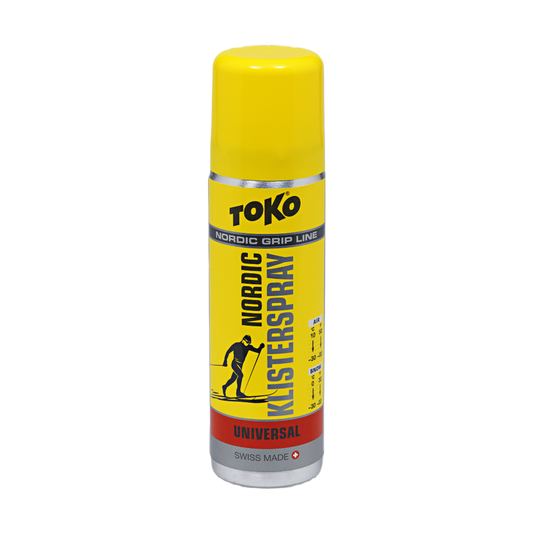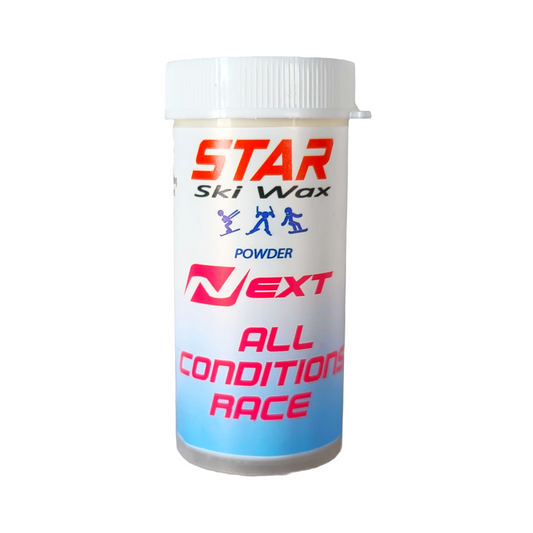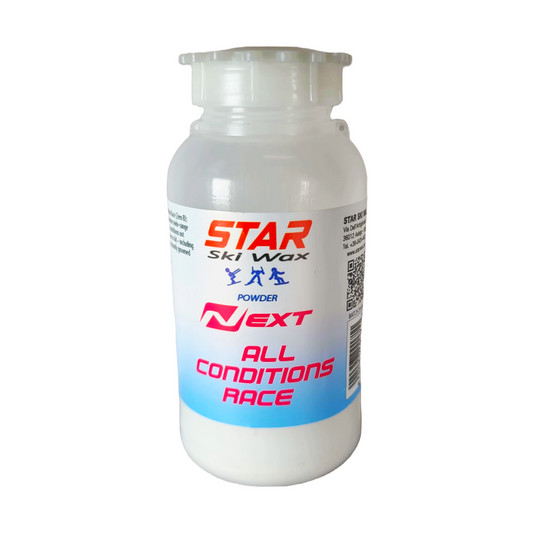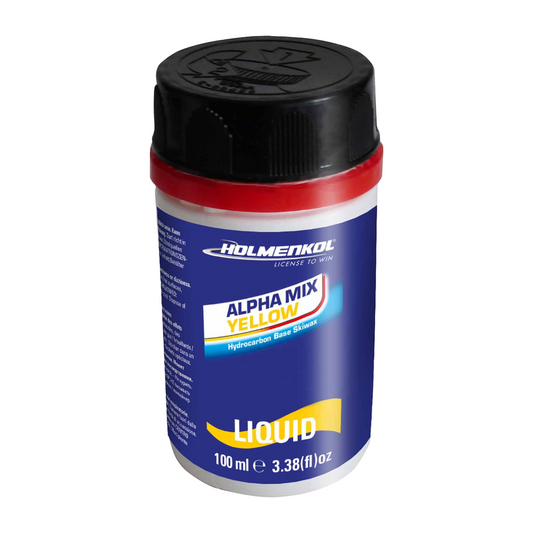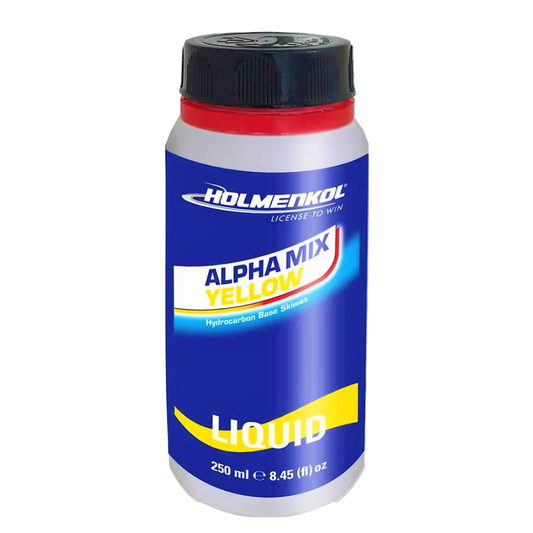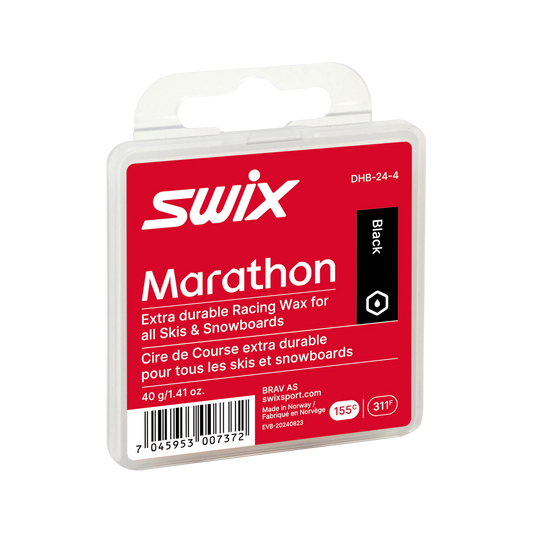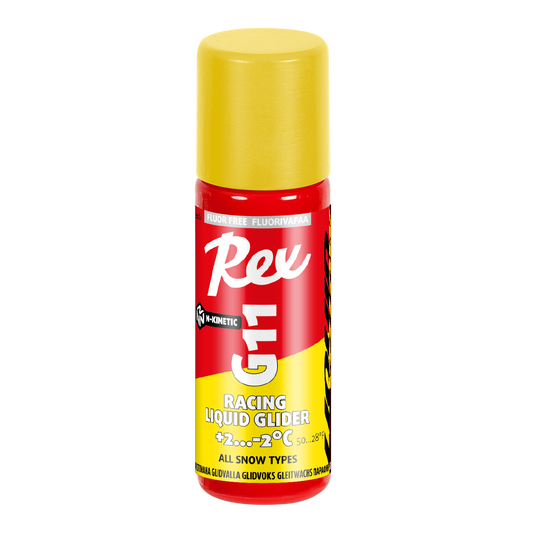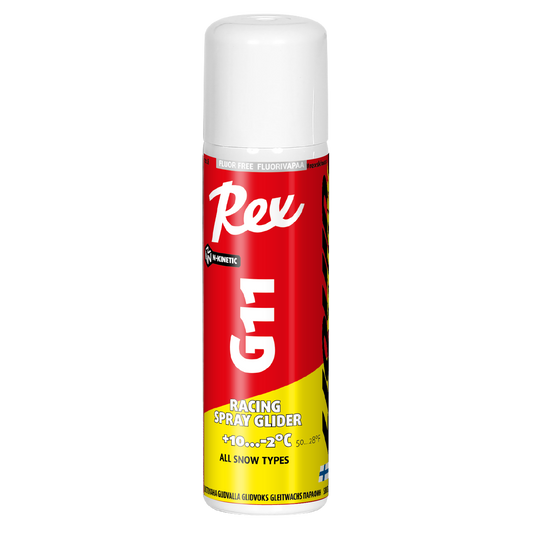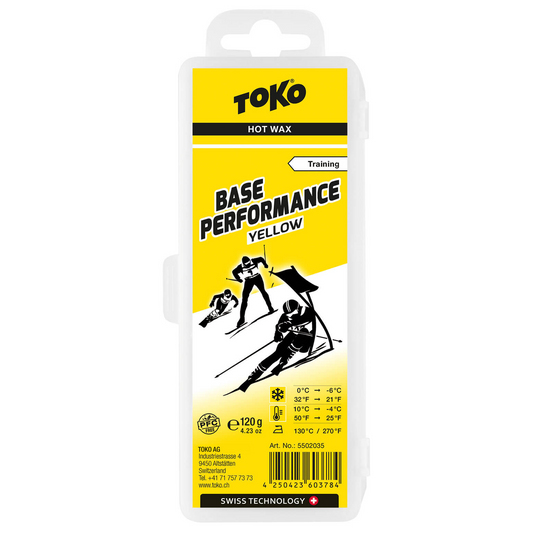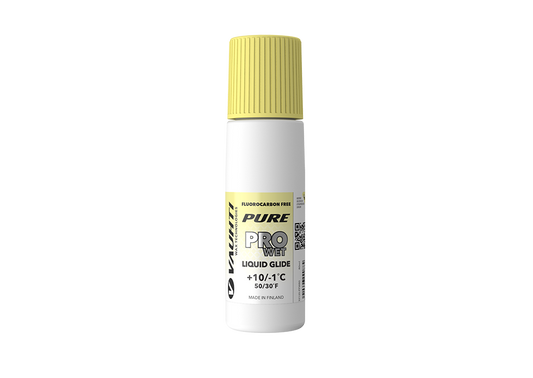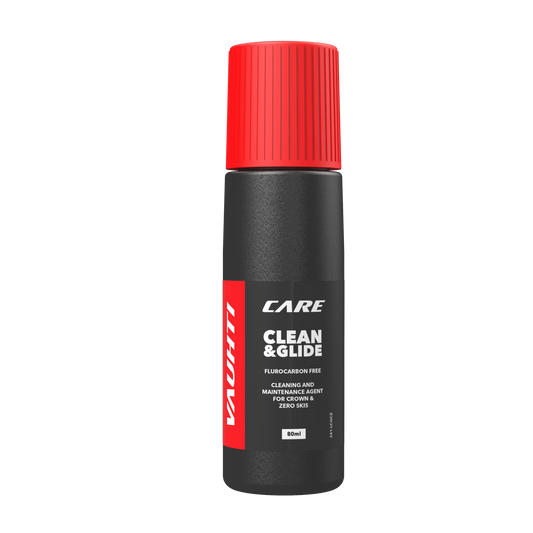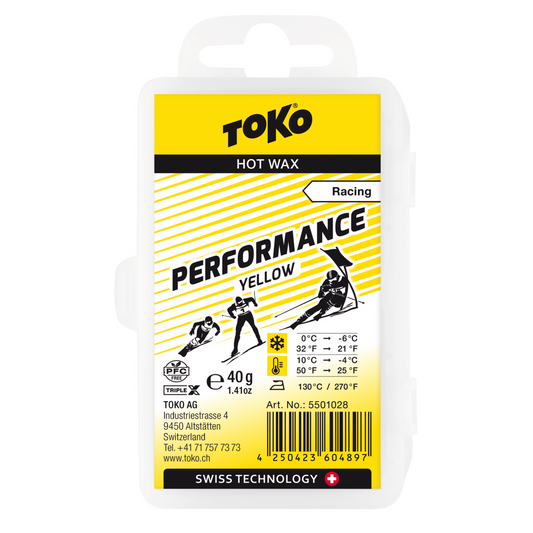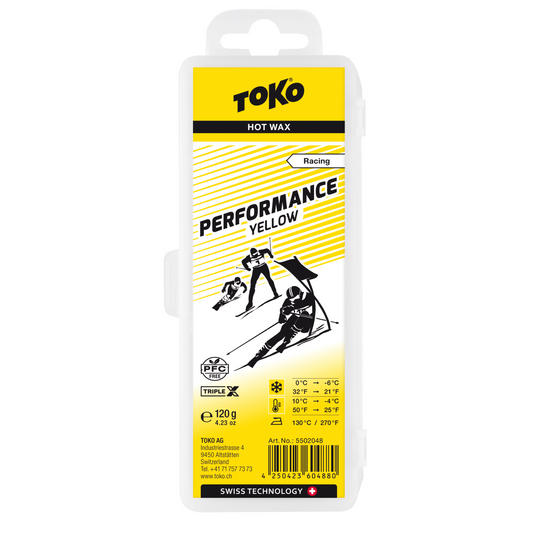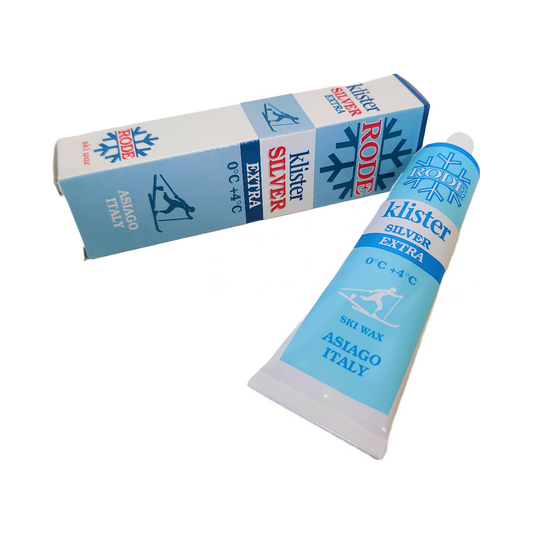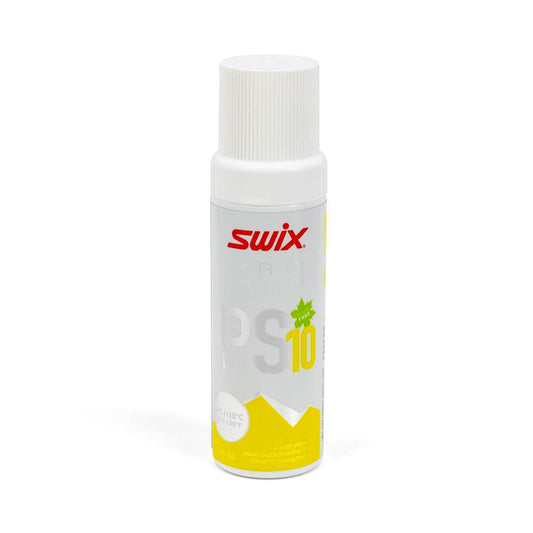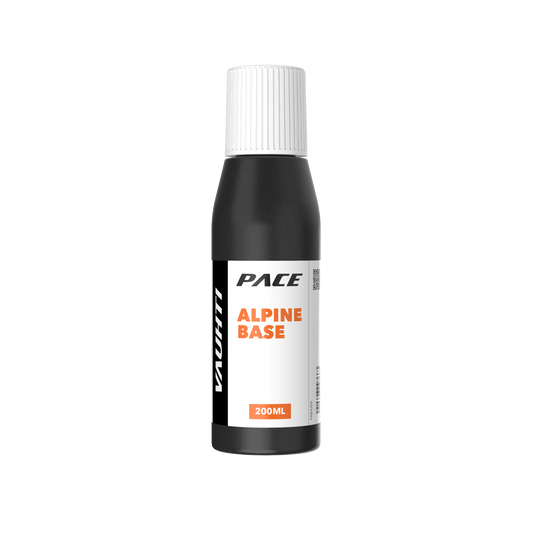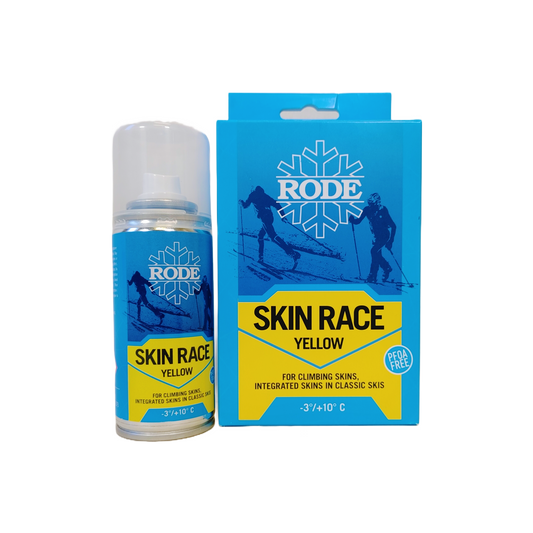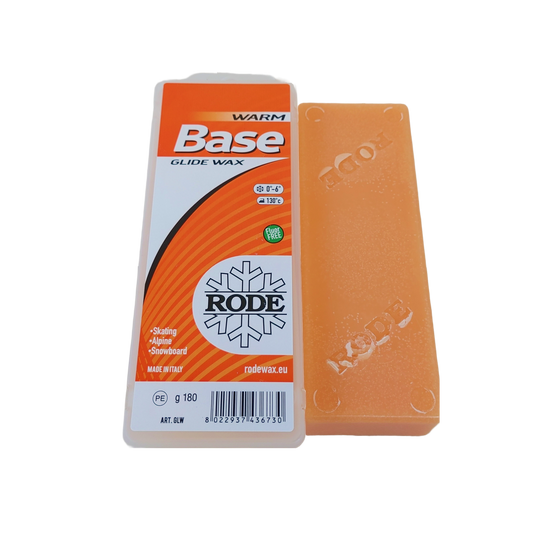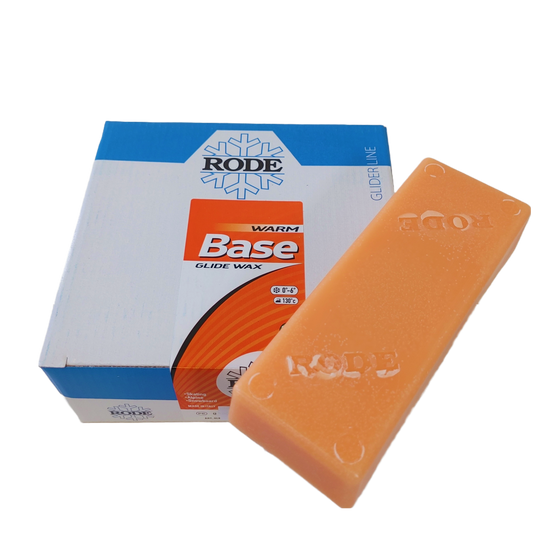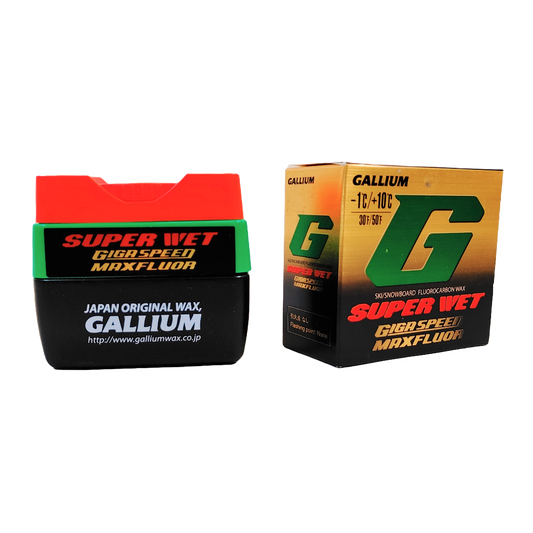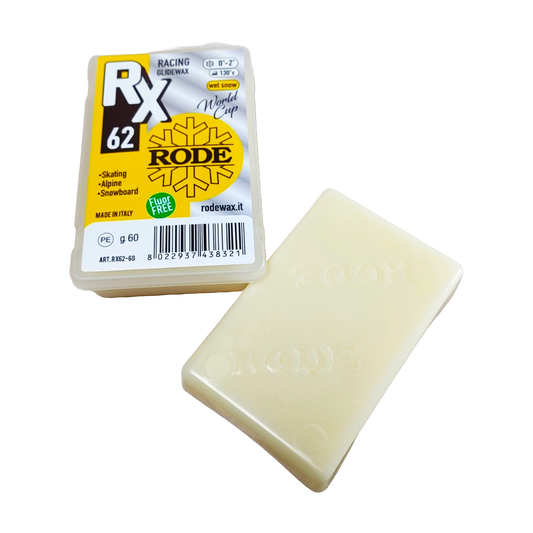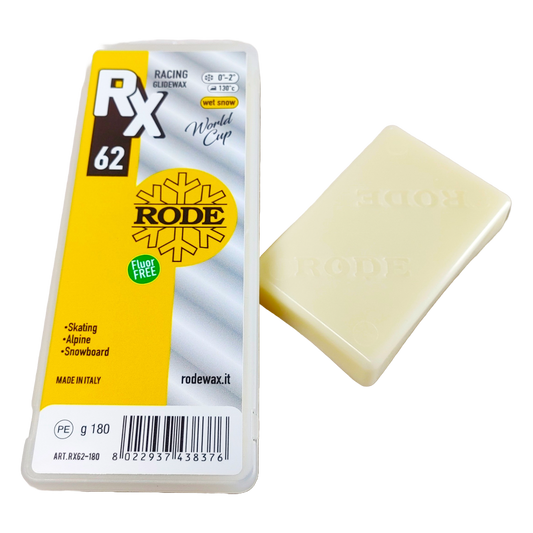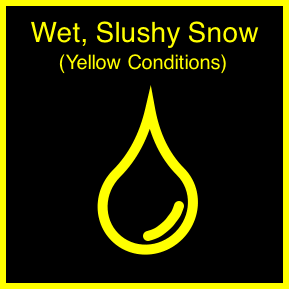
Yellow Snow Conditions (Wet, Slushy, Old Snow, +20°C to 0°C)
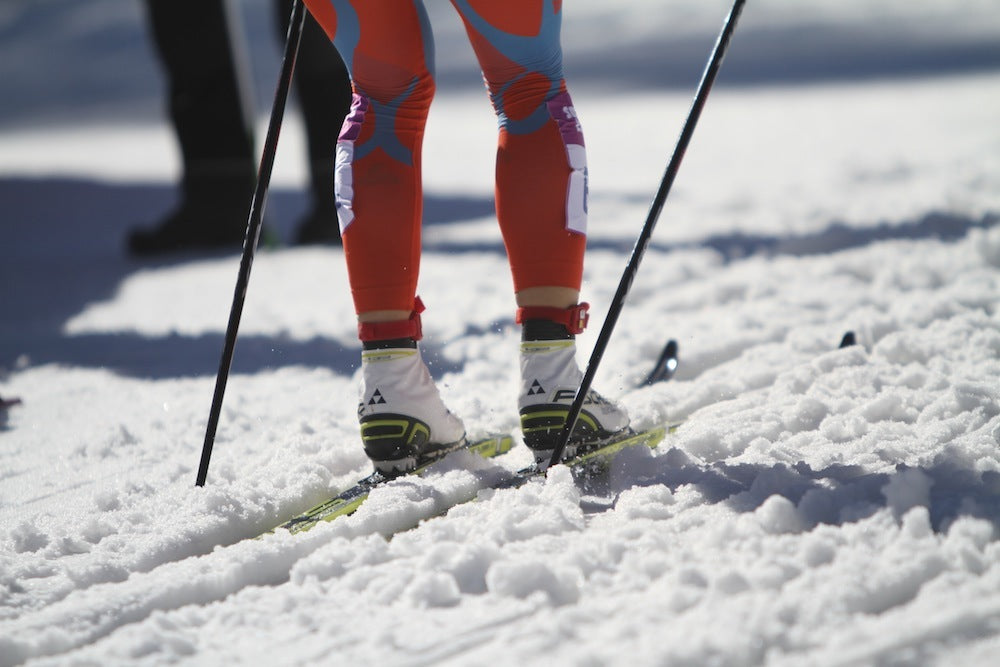
Yellow conditions occur when old snow is thoroughly saturated with water. It's slushy; it's wet; it's warm; it's old and usually coarse-grained and dirty. The temperature range for these conditions is 0C to... the warmest it can be with snow on the ground! 'Yellow' snow is heavily transformed. It has been through a melt/freeze cycle or two and has become corny or coarse-grained. Because the snow transformed, it tends to drain better than 'Pink' snow since the space between the individual ice crystals allows water to drain away. You're still dealing with a lot of water either way, so your main waxing consideration will be to get rid of water from the ski base! The big difference between pink and yellow conditions is the amount of dirt deposited on top of the snowpack. Choosing a wax with compounds to limit the effects of dirt is also key when waxing for yellow conditions.
-
Friction Characteristics
Physically, the wet snow crystal structure has the most rounded edges. This means kinetic friction is very low. The main source of friction in this snow type is suction friction from the vast amounts of liquid water between the ski base and the snowpack. The top priority for glide waxing for these conditions is getting rid of water from the bottom of the ski base. Waxes for this temperature range used to be physically softer (soft waxes are more hydrophobic than harder ones), but in recent years, glide waxes for this temperature range have become much harder to help keep ski bases free of dirt. Fluoro compounds are massively hydrophobic, so anything with fluorination will likely be an excellent choice. Adding aggressive structure to your ski base with a rill tool will have the biggest benefit to glide as the grooves and channels will give water an escape route. Often waxes with dirt-repellent compounds have a leg up on others since dirt builds upon the surface of the snow as it melts. Waxes with molybdenum or graphite tend to stay fast in yellow conditions over long distances.
-
Kick Waxing
Snow crystals in yellow conditions have melted into round, wet blobs. This makes finding a grip wax that is able to stick to snow crystals very tricky. The water surrounding the snow crystals acts as a lubricant, which is the equivalent of having oil on your brake pads. This means in order to find a kick wax that gets grip in this kind of snow; you'll have to get something as soft and sticky as possible: hence, klister! Hard wax is a no-go when the snow gets this wet, but rub skis (hairys or zeros), skin skis, and fish scales tend to work quite well if Klister isn't your thing. Again, a klister with Fluoros or other dirt and water-repelling compounds will help your grip wax glide.
Products for Yellow Snow Conditions
-
STAR NEXT Durable Long Distance Fluoro-Free Racing Wool-Apply BLOCK | 28g
Regular price $85.00 CADRegular priceUnit price / per$0.00 CADSale price $85.00 CAD18 in stock -
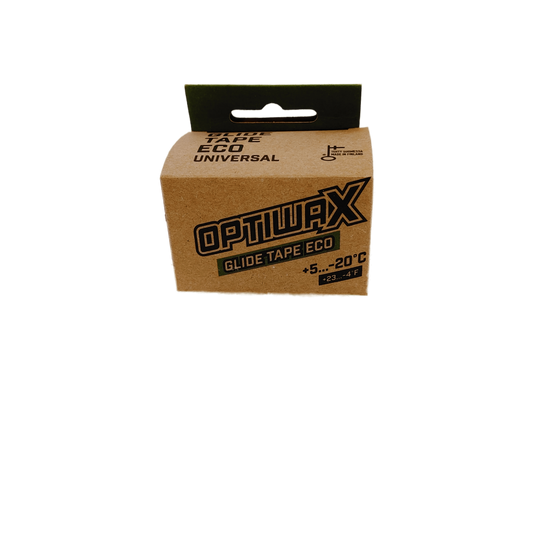
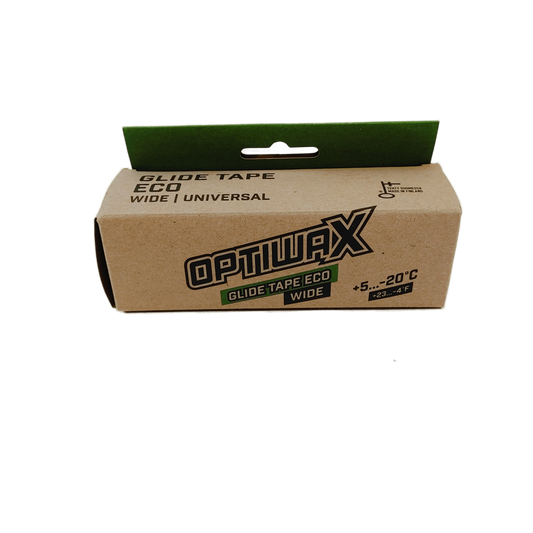 Save $23.00
Save $23.00Optiwax Eco Glide Tape (5C/-20C)
Regular price From $23.00 CADRegular priceUnit price / per$46.00 CADSale price From $23.00 CAD156 in stockOptiwax Eco Glide Tape (5C/-20C)
Regular price From $23.00 CADRegular priceUnit price / per$46.00 CADSale price From $23.00 CADOptiwax Eco Glide Tape (5C/-20C)
Regular price From $23.00 CADRegular priceUnit price / per$46.00 CADSale price From $23.00 CADSale -
Rex Wax NF11 Yellow Block Glider (10C/-2C)
Regular price From $106.95 CADRegular priceUnit price / per$0.00 CADSale price From $106.95 CAD3 in stockRex Wax NF11 Yellow Block Glider (10C/-2C)
Regular price From $106.95 CADRegular priceUnit price / per$0.00 CADSale price From $106.95 CADRex Wax NF11 Yellow Block Glider (10C/-2C)
Regular price From $106.95 CADRegular priceUnit price / per$0.00 CADSale price From $106.95 CAD -
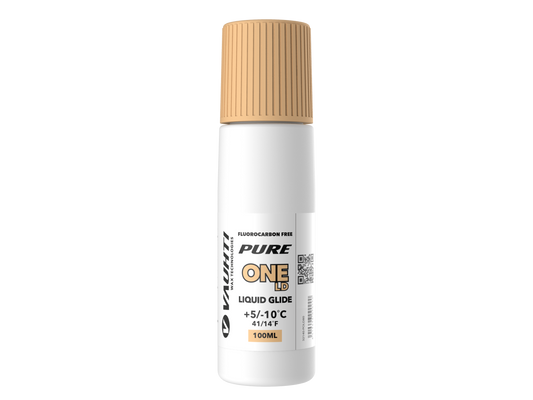
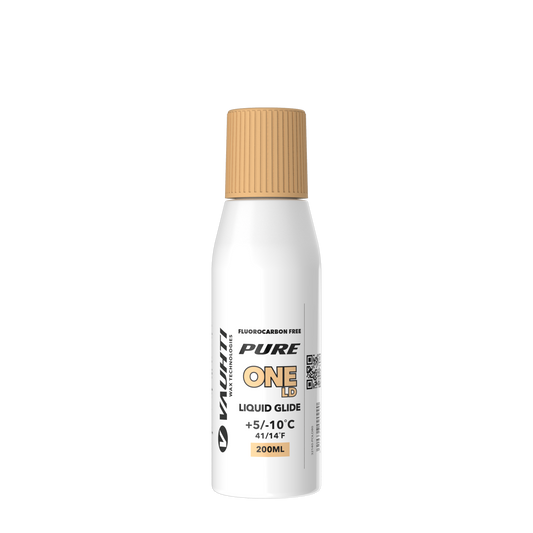 Save $11.99
Save $11.99Vauhti ONE LD Liquid Glide 2024 (5C/-10C)
Regular price From $31.97 CADRegular priceUnit price / per$43.96 CADSale price From $31.97 CAD10 in stockVauhti ONE LD Liquid Glide 2024 (5C/-10C)
Regular price From $31.97 CADRegular priceUnit price / per$43.96 CADSale price From $31.97 CADVauhti ONE LD Liquid Glide 2024 (5C/-10C)
Regular price From $31.97 CADRegular priceUnit price / per$43.96 CADSale price From $31.97 CADSale -
Toko Nordic Klister Spray Universal (10C/-30C) | 70ml
Regular price $21.22 CADRegular priceUnit price / per$25.00 CADSale price $21.22 CAD1 in stockSale -
STAR NEXT All Conditions Fluoro-Free Racing Powder
Regular price From $90.00 CADRegular priceUnit price / per$0.00 CADSale price From $90.00 CAD9 in stockSTAR NEXT All Conditions Fluoro-Free Racing Powder
Regular price From $90.00 CADRegular priceUnit price / per$0.00 CADSale price From $90.00 CADSTAR NEXT All Conditions Fluoro-Free Racing Powder
Regular price From $90.00 CADRegular priceUnit price / per$0.00 CADSale price From $90.00 CAD -
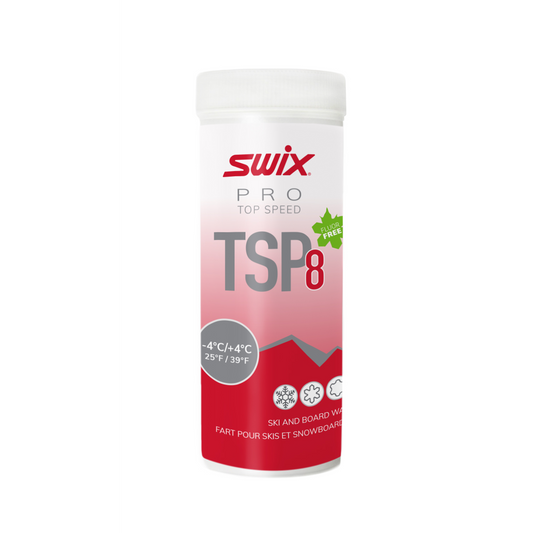 Save $15.00
Save $15.00Swix TSP8 Powder Red (4C/-4C) | 40g
Regular price $135.00 CADRegular priceUnit price / per$150.00 CADSale price $135.00 CAD1 in stockSale -
Holmenkol Alphamix YELLOW Basewax Liquid (0C/-4C)
Regular price From $29.50 CADRegular priceUnit price / per$0.00 CADSale price From $29.50 CAD18 in stockHolmenkol Alphamix YELLOW Basewax Liquid (0C/-4C)
Regular price From $29.50 CADRegular priceUnit price / per$0.00 CADSale price From $29.50 CADHolmenkol Alphamix YELLOW Basewax Liquid (0C/-4C)
Regular price From $29.50 CADRegular priceUnit price / per$0.00 CADSale price From $29.50 CAD -
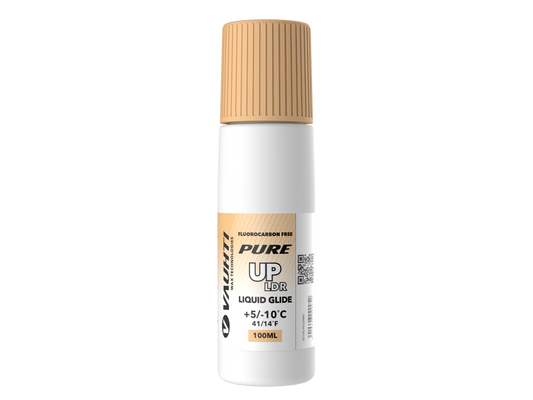
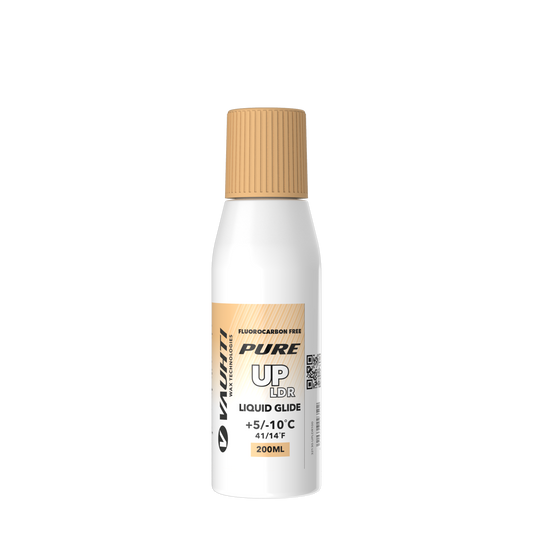 Save $20.79
Save $20.79Vauhti UP LDR Liquid Glide 2024 (5C/-10C)
Regular price From $59.17 CADRegular priceUnit price / per$79.96 CADSale price From $59.17 CAD9 in stockVauhti UP LDR Liquid Glide 2024 (5C/-10C)
Regular price From $59.17 CADRegular priceUnit price / per$79.96 CADSale price From $59.17 CADVauhti UP LDR Liquid Glide 2024 (5C/-10C)
Regular price From $59.17 CADRegular priceUnit price / per$79.96 CADSale price From $59.17 CADSale -
Swix Marathon Black Block | 40g
Regular price $120.00 CADRegular priceUnit price / per$0.00 CADSale price $120.00 CAD17 in stock -
Rex Wax G11 Yellow N-Kinetic Liquid Glider (10C/-2C)
Regular price From $39.95 CADRegular priceUnit price / per$0.00 CADSale price From $39.95 CAD17 in stockRex Wax G11 Yellow N-Kinetic Liquid Glider (10C/-2C)
Regular price From $39.95 CADRegular priceUnit price / per$0.00 CADSale price From $39.95 CADRex Wax G11 Yellow N-Kinetic Liquid Glider (10C/-2C)
Regular price From $39.95 CADRegular priceUnit price / per$0.00 CADSale price From $39.95 CAD -
Toko Base Performance Yellow Paraffin Melt Wax
Regular price From $30.00 CADRegular priceUnit price / per$0.00 CADSale price From $30.00 CAD1 in stockToko Base Performance Yellow Paraffin Melt Wax
Regular price From $30.00 CADRegular priceUnit price / per$0.00 CADSale price From $30.00 CADToko Base Performance Yellow Paraffin Melt Wax
Regular price From $30.00 CADRegular priceUnit price / per$0.00 CADSale price From $30.00 CAD -
Vauhti PRO WET Liquid Glide Discontinued Version From 2021 Or Earlier | 80ml (10C/-1C)
Regular price $67.47 CADRegular priceUnit price / per$89.96 CADSale price $67.47 CAD5 in stockSale -
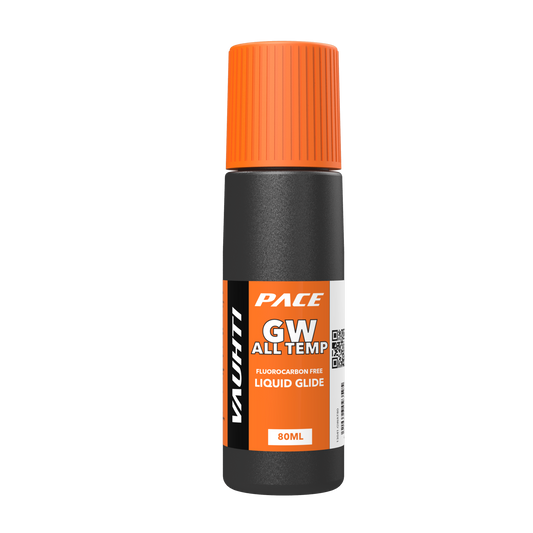 Save $5.59
Save $5.59Vauhti GW ALL TEMP Liquid Glide | 80ml
Regular price $22.37 CADRegular priceUnit price / per$27.96 CADSale price $22.37 CAD12 in stockSale -
Vauhti Clean & Glide Liquid For Crown & Zero Skis | 80ml (10C/-1C)
Regular price $28.00 CADRegular priceUnit price / per$0.00 CADSale price $28.00 CAD30 in stock -
Toko Performance Yellow Paraffin Melt Wax
Regular price From $30.00 CADRegular priceUnit price / per$0.00 CADSale price From $30.00 CAD7 in stockToko Performance Yellow Paraffin Melt Wax
Regular price From $30.00 CADRegular priceUnit price / per$0.00 CADSale price From $30.00 CADToko Performance Yellow Paraffin Melt Wax
Regular price From $30.00 CADRegular priceUnit price / per$0.00 CADSale price From $30.00 CAD -
Rode Silver Extra Klister K52 | 60g (4C/0C)
Regular price $23.96 CADRegular priceUnit price / per$0.00 CADSale price $23.96 CAD52 in stock -
Swix PS10 Yellow Liquid Glide Wax (0C/10C) | 80ml
Regular price $40.00 CADRegular priceUnit price / per$0.00 CADSale price $40.00 CAD7 in stock -
Vauhti ALPINE BASE Liquid Glide
Regular price From $38.00 CADRegular priceUnit price / per$0.00 CADSale price From $38.00 CAD1 in stockVauhti ALPINE BASE Liquid Glide
Regular price From $38.00 CADRegular priceUnit price / per$0.00 CADSale price From $38.00 CADVauhti ALPINE BASE Liquid Glide
Regular price From $38.00 CADRegular priceUnit price / per$0.00 CADSale price From $38.00 CAD -
Rode SKIN SKI RACING YELLOW WAX KIT | 100ml (10C/-3C)
Regular price $29.96 CADRegular priceUnit price / per$39.95 CADSale price $29.96 CAD43 in stockSale -
Rode BASE GLIDER WARM MELT WAX (0C/-6C)
Regular price From $35.96 CADRegular priceUnit price / per$0.00 CADSale price From $35.96 CAD36 in stockRode BASE GLIDER WARM MELT WAX (0C/-6C)
Regular price From $35.96 CADRegular priceUnit price / per$0.00 CADSale price From $35.96 CADRode BASE GLIDER WARM MELT WAX (0C/-6C)
Regular price From $35.96 CADRegular priceUnit price / per$0.00 CADSale price From $35.96 CAD -
Gallium GIGA SPEED Maxfluor SUPER WET Liquid (10C/-1C) | 30ml
Regular price $228.00 CADRegular priceUnit price / per$285.00 CADSale price $228.00 CAD4 in stockSale -
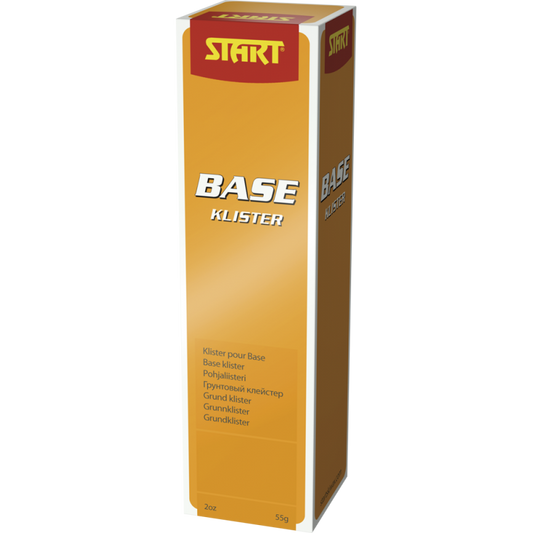 Save $16.00
Save $16.00Start Base Klister | 55g
Regular price $20.00 CADRegular priceUnit price / per$36.00 CADSale price $20.00 CAD16 in stockSale -
Rode RX62 Old Snow WC Glider Yellow Melt Wax (0C/-2C)
Regular price From $85.96 CADRegular priceUnit price / per$0.00 CADSale price From $85.96 CAD42 in stockRode RX62 Old Snow WC Glider Yellow Melt Wax (0C/-2C)
Regular price From $85.96 CADRegular priceUnit price / per$0.00 CADSale price From $85.96 CADRode RX62 Old Snow WC Glider Yellow Melt Wax (0C/-2C)
Regular price From $85.96 CADRegular priceUnit price / per$0.00 CADSale price From $85.96 CAD

